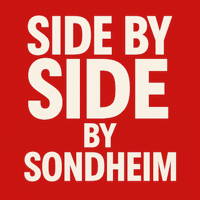
Side by Side by Sondheim
Musical
Writers:Stephen Sondheim Jule Styne Leonard Bernstein Mary Rodgers Richard Rodgers Ned Sherrin
Overview
Synopsis
Side by Side by Sondheim is a sophisticated and witty musical revue celebrating the early work of composer-lyricist Stephen Sondheim. Rather than following a traditional plot, the show is structured as an evening of themed musical vignettes, narrated with humor and insight. Through songs from Company, Follies, A Little Night Music, A Funny Thing Happened on the Way to the Forum, and Anyone Can Whistle—along with rarities from The Seven Percent Solution and Evening Primrose—the revue explores the complexity of human relationships, the pain and joy of love, and the intricacies of urban life. Each number is performed with minimal staging, allowing the sharp lyrics and emotional resonance of Sondheim’s music to take center stage.
Throughout the performance, a narrator guides the audience through the themes and stylistic evolution of Sondheim’s career, offering context, anecdotes, and commentary that link the songs together. The cast—traditionally two women, one man, and a pianist—transitions seamlessly between comedy, pathos, and reflection, illustrating Sondheim’s unique blend of intellect and heart. The result is an elegant, cabaret-style evening that both entertains and deepens appreciation for Sondheim’s genius, highlighting his gift for transforming ordinary experiences into extraordinary musical storytelling.
Show Information
Context
When Side by Side by Sondheim premiered in London in 1976, Stephen Sondheim was already regarded by theatre insiders as one of the most innovative voices in modern musical theatre, but his work had not yet achieved widespread mainstream popularity. Producer and director Ned Sherrin, along with performers David Kernan and Millicent Martin, conceived the revue as a way to showcase Sondheim’s brilliance to new audiences. With Sondheim’s approval, they crafted a sophisticated evening of songs
to read the context for Side by Side by Sondheim and to unlock other amazing theatre resources!Plot
Characters
| Name | Part Size | Gender | Vocal Part |
|---|---|---|---|
|
Lead |
Male |
Baritone |
|
|
Lead |
Male |
Non-singer |
|
|
Lead |
Female |
Soprano |
|
|
Lead |
Female |
Mezzo-Soprano |
Songs
Act I
Act II
A song with an asterisk (*) before the title indicates a dance number.
Monologues
Scenes
Key Terms
A form of theatrical entertainment featuring music, song, dance, and drama, often performed in a nightclub or pub-style venue.
The imaginary wall separating the audience from the actors onstage, often 'broken' for direct address. This term plays a vital role in understanding theatrical structure and is commonly encountered in stagecraft or performance settings.
A literary device where the intended meaning differs from the literal meaning, often creating contrast or humor. Irony is used in theatre to provoke thought or elicit reactions from the audience by highlighting contradictions in character behavior or plot outcomes.
A theatrical style that emphasizes simplicity in staging and dialogue to focus attention on core themes and performance.
Rapid and rhythmic speech or singing, often used in comic opera roles or musical theatre for humorous effect.
A form of theatre with a series of short sketches, songs, and dances, often satirical and lacking a unified narrative.
Wordplay is the clever and imaginative use of language to create humor, double meanings, or unexpected associations. It often involves puns, alliteration, rhymes, or twists in phrasing that reveal wit and verbal dexterity. In theatre, wordplay enhances dialogue and lyrics by adding layers of meaning, rhythm, and entertainment value.
Videos
Quizzes
Themes, Symbols & Motifs
Themes
At its core, Side by Side by Sondheim
to read about the themes, symbols and motifs from Side by Side by Sondheim and to unlock other amazing theatre resources!Quote Analysis
Sorry! We do not currently have learning modules for this guide.